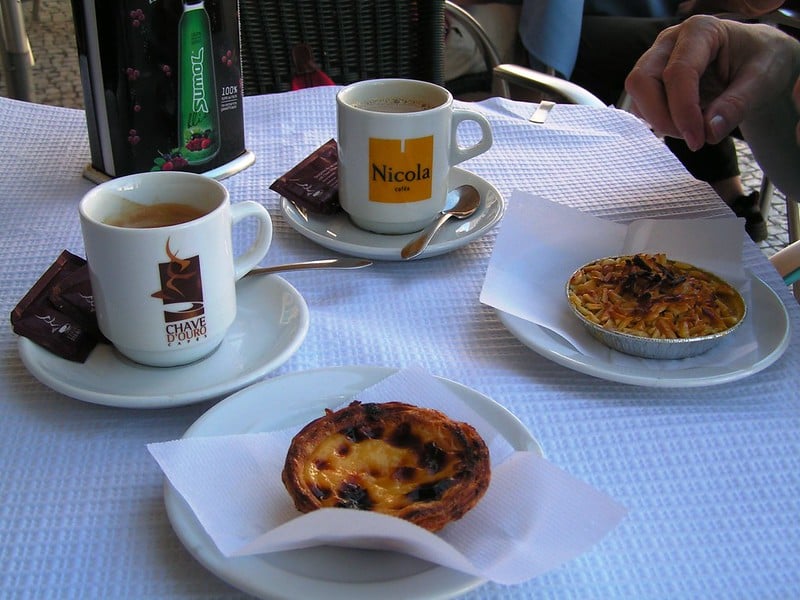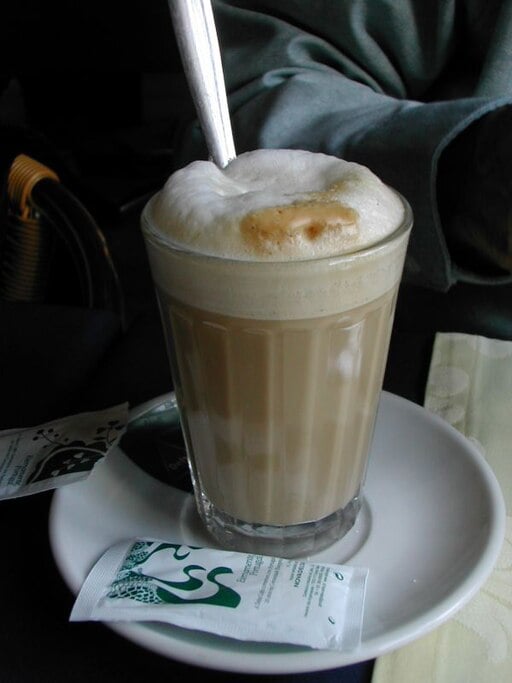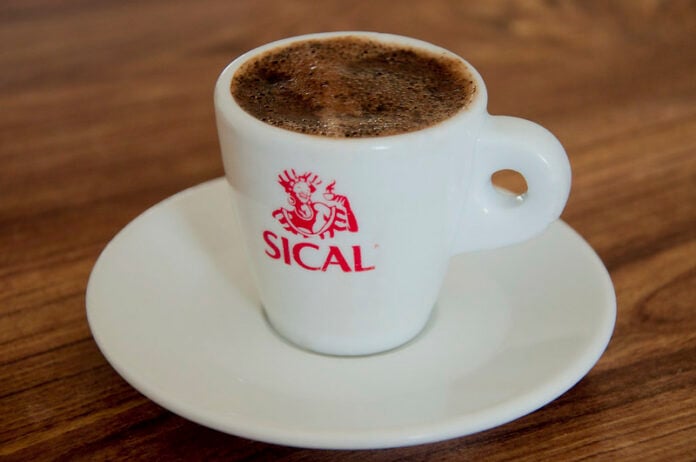Each country has its own distinct coffee culture and learning how to order a coffee in Portugal will make you feel one step closer to being a local. From the strong and bold to the creamy and mild, Portuguese coffee offers a variety of options to suit every palate. This guide will walk you through the intricacies of ordering coffee in Portugal, ensuring you can confidently request your drink of choice like the Portuguese.
When you step into a Portuguese café, you’ll immediately notice the lively atmosphere and the aroma of freshly brewed coffee. The coffee culture in Portugal is deeply ingrained in daily life, with locals often starting their day with a quick espresso at their favorite café. Unlike some countries where coffee is savored and people spend hours in conversation with one cup of coffee, in Portugal, things can go one of two ways: either you stand up at the counter and consume an espresso in just a few minutes or you sit down with a friend and enjoy a larger cup of coffee with a nice chat.

How to Order Coffee in Portugal: Language Tips
When ordering in Portuguese, it’s helpful to know a few key phrases. “Se faz favor” is a polite way to say “please” and can be added to the end of your order. For example, “Um café, se faz favor” (A coffee, please). Remember, a little effort to use Portuguese when ordering goes a long way and is often appreciated by the locals.
It’s also worth noting that in Portugal, it’s perfectly acceptable to specify how you like your coffee. If you prefer your espresso with sugar, you can ask for “Um café com açúcar” (A coffee with sugar). Many cafés will serve a small packet of sugar alongside your coffee, allowing you to add it yourself.
Popular Portuguese Coffee Drinks
Café: The Classic Portuguese Espresso
Let’s start with the most basic and popular order: the “café.” When you ask for a “café” in Portugal, you’ll receive a small cup of espresso. This is the default coffee order and forms the basis of Portuguese coffee culture. The café is typically served in a small cup and is meant to be consumed quickly, often while standing at the counter. It’s strong, flavorful, and provides a quick caffeine boost to start the day or as an afternoon pick-me-up.
Interestingly, there’s a regional difference for the Portuguese word for “espresso.” In Lisbon and the south, people typically use “bica” when ordering an espresso, while in Porto and the north, “cimbalino” is more common. However, using “café” is universally understood throughout the country.
Café Duplo: Double the Strength
For those who prefer a stronger coffee experience, there’s the “café duplo” or simply “duplo.” As the name suggests (duplo means double in Portuguese), this is a double shot of espresso. It’s perfect for those mornings when you need an extra kick or for coffee enthusiasts who appreciate a more intense flavor profile. The duplo is served in a slightly larger cup than the standard café but is still considered a small serving by international standards.
Café Curto: A Concentrated Burst of Flavor
On the opposite end of the spectrum is the “café curto” or just “curto.” This is an espresso shot that’s even shorter than the standard café. It’s for those who want a quick, concentrated burst of coffee flavor without the volume of a full espresso. The curto is particularly popular among those who enjoy the essence of coffee but find a full espresso too strong or too much liquid.
Descafeinado: Decaf for the Caffeine-Conscious
For those who prefer their coffee without the caffeine, there’s the “descafeinado.” This is simply decaffeinated coffee, usually served as an espresso shot. It’s worth noting that in Portugal, decaf coffee is not as common as in some other countries, but most cafés will be able to accommodate this request. The descafeinado allows you to enjoy the ritual and flavor of coffee without the stimulating effects of caffeine.
Carioca: A Gentler Espresso Experience
If you find the standard café too strong, you might want to try a “carioca.” This is essentially a weaker version of the café, made by adding hot water to the espresso shot. The result is a less intense coffee that still retains much of the flavor of a traditional espresso. It’s a good option for those transitioning from milder coffee drinks to the stronger Portuguese style.
Pingado: Espresso with a Touch of Milk
Another interesting variation is the “pingado.” This is an espresso with just a drop of milk added. The name comes from the Portuguese word for “dripped,” referring to the small amount of milk that’s added to the coffee. It’s a subtle way to soften the intensity of the espresso without significantly altering its character. The pingado is perfect for those who want to maintain the strong coffee flavor but with a touch of creaminess.
Café com Cheirinho: A Unique Portuguese Twist
For a unique Portuguese coffee experience, try the “café com cheirinho.” Literally translating to “coffee with a little smell,” this drink is an espresso served with a small shot of brandy or aguardente (a strong Portuguese spirit) on the side. The idea is to add a splash of the alcohol to your coffee, giving it a fragrant aroma and a warming kick. It’s particularly popular as an after-dinner drink or on cold days.
Milk-Based Portuguese Coffee Drinks
Galão: Portugal’s Answer to the Latte
Moving towards milk-based coffee drinks, we have the “galão.” This is similar to a latte and consists of about one-quarter coffee and three-quarters foamed milk. It’s typically served in a tall glass and is a popular choice for breakfast or as an afternoon treat. The galão is milder and creamier than the espresso-based drinks, making it a favorite among those who prefer a less intense coffee flavor.

Garoto: The Little Brother of Galão
A smaller version of the galão is the “garoto.” The word garoto means “little boy” in Portuguese, and in coffee terms, it refers to an espresso with a generous splash of foamed milk. It’s served in a small cup, similar in size to a standard café, but with a lighter color due to the added milk. The garoto is a good choice for those who want a bit of milk in their coffee but don’t want a full galão.
Meia de Leite: The Perfect Balance
The “meia de leite” is another milk-based coffee drink, translating to “half milk.” As the name suggests, it’s made with equal parts coffee and milk. It’s similar to a flat white and is often served in a larger cup than the café or garoto. The meia de leite is a popular choice for breakfast, offering a balanced blend of coffee flavor and creamy milk.
Other Popular Coffee Drinks in Portugal
Abatanado: The Portuguese Americano
For those who prefer a larger serving of coffee, there’s the “abatanado.” This is essentially an Americano – an espresso with hot water added to create a larger cup of coffee. The abatanado is less intense than a straight espresso but still retains much of the flavor. It’s a good option for those used to filter coffee or who want a larger volume of coffee to enjoy over a longer period.
Cappuccino: An International Favorite with a Portuguese Touch
Lastly, we have the “cappuccino.” While not traditionally Portuguese, cappuccinos are widely available in cafés across Portugal, especially in more touristy areas. However, it’s worth noting that the Portuguese version might differ slightly from what you’re used to. It typically consists of an espresso base with foamed milk and often includes a sprinkle of cocoa powder or cinnamon on top.
Embracing the Portuguese Coffee Experience
Whether you’re starting your day with a strong café, enjoying a leisurely galão in the afternoon, or finishing your evening meal with a café com cheirinho, you’re participating in a cherished Portuguese tradition. Ordering coffee in Portugal is an adventure in itself, and there’s a coffee for every preference. By familiarizing yourself with these various options, you’ll be able to order with confidence and fully appreciate the rich coffee culture that Portugal has to offer. So next time you find yourself in a Portuguese café, don’t hesitate to explore the menu and find your perfect Portuguese coffee experience.


